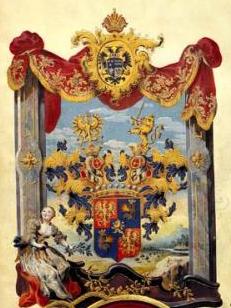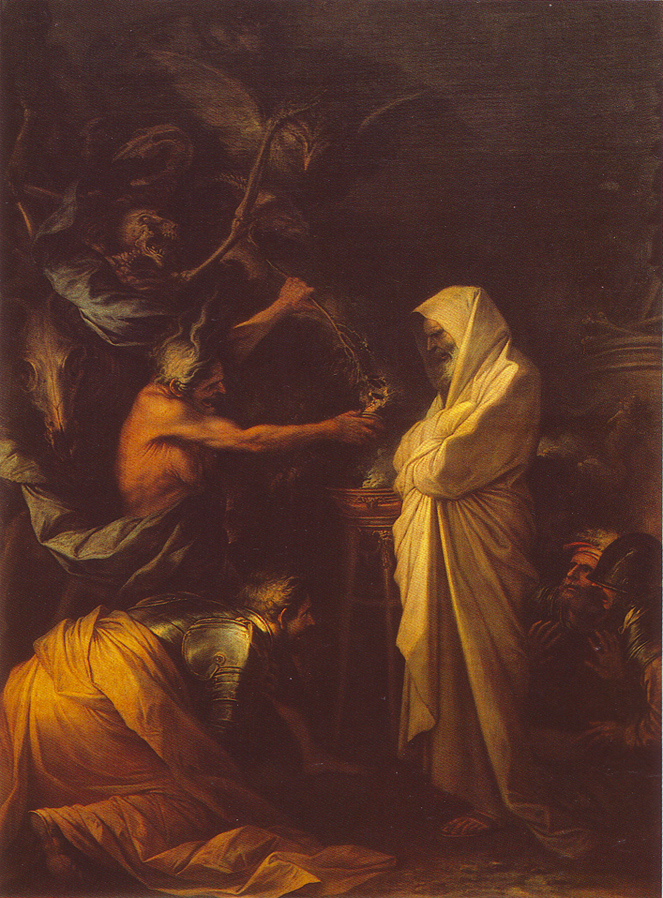|
Lanckoroński Family
The House of Lanckoroński (plural: Lanckorońscy) was an old and wealthy Polish nobility, Polish aristocratic family. Its representatives held power and influence in the Kingdom of Poland from the times of the late Piast dynasty (14th century) to the end of the Polish–Lithuanian Commonwealth (18th century). History The Lanckoroński name derives from the village of Lanckorona in Lesser Poland, a site of a castle. The family had previously hailed from Brzezie (today part of the town of Wodzisław, Świętokrzyskie Voivodeship, Wodzisław). The Lanckorońskis were based in Kraków and Sandomierz and used the Zadora coat of arms. Emperor Joseph II, Holy Roman Emperor, Joseph II’s confirmed the validity of the title of Count granted to the Lanckoroński family (18 November 1783). In the late 19th century, Count Karol Lanckoroński built the Palais Lanckoroński in Vienna. Notable representatives * Mikołaj z Brzezia (Mikołaj of Brzezie), 14th century Grand Crown Marshal * Zbig ... [...More Info...] [...Related Items...] OR: [Wikipedia] [Google] [Baidu] |
Palais Lanckoroński
The ''Palais Lanckoroński'' was a palace in Vienna, Austria, located at Jacquingasse 16-18, in the Landstraße District. It was constructed in 1894-95 for Count Karol Lanckoroński and his family as a personal residence, and it housed the count's enormous art collection. The palace was built in a neo-baroque style by the theatre architects Ferdinand Fellner and Hermann Helmer. The building was three stories high, set back from the street, and protected by a wall with double gates. The entrance hall was wood panelled, two stories high, and decorated with portraits of the family. Other festive halls were decorated with frescoes and luxurious gobelin tapestries from the 17th century. Precious paintings, furniture and sculpture from different eras were arranged to form themed ensembles in the various rooms, with the rooms named to reflect the collection housed within. The palace was severely damaged in World War II, and was torn down in the 1960s. History The noble Lanckoro� ... [...More Info...] [...Related Items...] OR: [Wikipedia] [Google] [Baidu] |
Starosta
Starosta or starost (Cyrillic: ''старост/а'', Latin: ''capitaneus'', ) is a community elder in some Slavic lands. The Slavic root of "starost" translates as "senior". Since the Middle Ages, it has designated an official in a leadership position in a range of civic and social contexts throughout Central and Eastern Europe. In reference to a municipality, a ''starosta'' was historically a senior royal administrative official, equivalent to a county sheriff or seneschal, and analogous to a '' gubernator''. In Poland, a ''starosta'' administered crown territory or a district called a '' starostwo''. In the early Middle Ages, a ''starosta'' could head a settled urban or rural community or other community, as in the case of a church starosta or an '' artel'' starosta. A starosta also functioned as a master of ceremonies. Czech Republic and Slovakia In the Czech Republic and Slovakia ''starosta'' is the title of a mayor of a town or village. Mayors of major cities use th ... [...More Info...] [...Related Items...] OR: [Wikipedia] [Google] [Baidu] |
Nowy Sącz
Nowy Sącz (; ; ; ; ) is a city in the Lesser Poland Voivodeship of southern Poland. It is the district capital of Nowy Sącz County as a separate administrative unit. With a population of 83,116 as of 2021, it is the largest city in the Beskid Sądecki Region as well as the third most populous city in the Lesser Poland Voivodeship. Names Nowy Sącz has been known in German language, German as ''Neu Sandez'' (older spelling ''Neu Sandec'') and in Hungarian language, Hungarian as ''Újszandec''. The Rusyn name was Novyj Sanc. Its Yiddish language, Yiddish names include צאַנז (''Tsanz'') and נײַ-סאַנץ (''Nay-Sants''). History Nowy Sącz was founded on 8 November 1292 by the Polish and Kingdom of Bohemia, Bohemian ruler Wenceslaus II of Bohemia, Wenceslaus II, on the site of an earlier village named Kamienica. The foundation of Nowy Sącz took place due to the efforts of Archbishop of Kraków, Bishop of Kraków, , who owned Kamienica. Upon request of the bishop, Wencesl ... [...More Info...] [...Related Items...] OR: [Wikipedia] [Google] [Baidu] |
Wiślica
Wiślica () () is a town in Busko County, Świętokrzyskie Voivodeship, in south-central Poland. It is the seat of the gmina (administrative district) called Gmina Wiślica. It lies on the Nida River, approximately south of Busko-Zdrój and south of the regional capital Kielce. In 2016 the town had a population of 503. It was the smallest town in Poland in 2018. History Medieval period Wiślica is an ancient settlement and has played an important role in History of Poland, Polish history. The town was founded more than 1000 years ago, close to the important commercial routes, running from Kraków to Sandomierz. At that time it was probably the capital of the Vistulans, a tribe which inhabited this region of Poland. After coming under temporary rule of Great Moravia and Bohemia, these lands were incorporated into Poland by Duke Mieszko I in 990. The first guarded settlement was probably established at the end of the 9th century, long before Polish statehood. The town Ruthenian ra ... [...More Info...] [...Related Items...] OR: [Wikipedia] [Google] [Baidu] |
Castellan
A castellan, or constable, was the governor of a castle in medieval Europe. Its surrounding territory was referred to as the castellany. The word stems from . A castellan was almost always male, but could occasionally be female, as when, in 1194, Beatrice of Bourbourg inherited her father's castellany of Bourbourg upon the death of her brother, Roger. Initial functions During the Migration Period after the fall of the Western Roman Empire (third to sixth century), foreign tribes entered Western Europe, causing strife. The answer to recurrent invasion was to create fortified areas which evolved into castles. Some military leaders gained control of several areas, each with a castle. The problem lay in exerting control and authority in each area when a leader could only be in one place at a time. To overcome this, they appointed castellans as their trusted vassals to manage a castle in exchange for obligations to the landlord, often a noble. In the 9th century, as fortification ... [...More Info...] [...Related Items...] OR: [Wikipedia] [Google] [Baidu] |
Samuel Lanckoroński
Samuel is a figure who, in the narratives of the Hebrew Bible, plays a key role in the transition from the biblical judges to the United Kingdom of Israel under Saul, and again in the monarchy's transition from Saul to David. He is venerated as a prophet in Judaism, Christianity, and Islam. In addition to his role in the Bible, Samuel is mentioned in Jewish rabbinical literature, in the Christian New Testament, and in the second chapter of the Quran (although the text does not mention him by name). He is also treated in the fifth through seventh books of ''Antiquities of the Jews'', written by the Jewish scholar Josephus in the first century. He is first called "the Seer" in 1 Samuel 9:9. Biblical account Family Samuel's mother was Hannah and his father was Elkanah. Elkanah lived at Ramathaim in the district of Zuph. His genealogy is also found in a pedigree of the Kohathites (1 Chronicles 6:3–15) and in that of Heman the Ezrahite, apparently his grandson (1 Chronicles 6 ... [...More Info...] [...Related Items...] OR: [Wikipedia] [Google] [Baidu] |
Voivode Of Sandomierz
Sandomierz Voivodeship (, ) was a unit of administration and local government in Poland from the 14th century to the partitions of Poland in 1772–1795. It was part of the Lesser Poland region and the Lesser Poland Province. Originally Sandomierz Voivodeship also covered the area around Lublin, but in 1474 its three eastern counties were organized into Lublin Voivodeship. In the 16th century, it had 374 parishes, 100 towns and 2586 villages. The voivodeship was based on the Sandomierz ''ziemia'', which earlier was the Duchy of Sandomierz. The Duchy of Sandomierz was created in 1138 by King Bolesław III Wrymouth, who in his testament divided Poland into five principalities. One of them, with the capital at Sandomierz, was assigned to Krzywousty's son, Henry of Sandomierz. Later on, with southern part of the Seniorate Province (which emerged into the Duchy of Kraków), the Duchy of Sandomierz created Lesser Poland, divided into Kraków and Sandomierz Voivodeships. Sandomi ... [...More Info...] [...Related Items...] OR: [Wikipedia] [Google] [Baidu] |
Stanisław Lanckoroński (voivode)
Stanisław Lanckoroński may refer to: * Stanisław Lanckoroński (voivode) (d. 1535) – voivode of Sandomierz of the Lanckoroński family The House of Lanckoroński (plural: Lanckorońscy) was an old and wealthy Polish nobility, Polish aristocratic family. Its representatives held power and influence in the Kingdom of Poland from the times of the late Piast dynasty (14th century) t ... * Stanisław Lanckoroński (hetman) (d. 1657) – Crown Field Hetman and voivode of Rus {{hndis, Lanckoronski, Stanislaw ... [...More Info...] [...Related Items...] OR: [Wikipedia] [Google] [Baidu] |
Cossack Hetman
A Hetman of Zaporizhian Cossacks is a historical term that has multiple meanings. Officially the post was known as Hetman of the Zaporizhian Host ().Mytsyk, Yu. Hetman (ГЕТЬМАН)'. Encyclopedia of History of Ukraine. Hetman of Zaporizhian Cossacks as a title was not officially recognized internationally until the creation of the Cossack Hetmanate. With the creation of Registered Cossacks units their leaders were officially referred to as Senior of His Royal Grace Zaporozhian Host (, ''Starshyi Yoho Korolivskoi Mylosti Viiska Zaporozkoho''). Before 1648 and the establishment of the Cossack Hetmanate there were numerous regional hetmans across the Dnieper-banks, who usually were starostas or voivodes. The first widely recognized hetman of Zaporizhia was Dmytro Vyshnevetsky, after that several Polish starostas were added to the Hetman registry such as Lanckoroński and Daszkiewicz who also led their own Cossack formations. According to Mykhailo Hrushevsky they were not real ... [...More Info...] [...Related Items...] OR: [Wikipedia] [Google] [Baidu] |
Przecław Lanckoroński
Przecław Lanckoroński () of Brzezie of Zadora coat of arms (died 10 June 1531) was a notable member of the Polish szlachta, a knight often identified as the first hetman of the Cossacks in service of Poland, as well as a landowner and starost of Chmielnik, title awarded in modern Ukraine Ukraine is a country in Eastern Europe. It is the List of European countries by area, second-largest country in Europe after Russia, which Russia–Ukraine border, borders it to the east and northeast. Ukraine also borders Belarus to the nor .... Biography He was born in Brzezie, Wieliczka County, Brzezie, to the family of Stanisław and Anna Lanckoroński, née Kurozwęcka. In his youth he was sent abroad by his parents and travelled through France, Italy, Hungary, List of states in the Holy Roman Empire, German states, as well as to the Holy Land, where he was awarded the title of Knight of Christ's Grave. Upon his return to Poland he joined the Polish Army, where he served unde ... [...More Info...] [...Related Items...] OR: [Wikipedia] [Google] [Baidu] |
Zbigniew Z Brzezia
Zbigniew of Brzezie (or Zbigniew Lanckoroński) (ca. 1360 – ca. 1425) was a notable Polish knight and nobleman of Clan Zadora. Zbigniew served as Crown Grand Marshal from 1399 to 1425 and starost of Kraków from 1409 to 1410. He was a diplomat and a close co-worker of King Władysław II Jagiełło. He was several times an envoy to King of Hungary and Germany Sigismund of Luxembourg. During the Battle of Grunwald in 1410 he commanded the banner of the Crown Grand Marshal. References General references * * 1360s births 1425 deaths 14th-century Polish nobility 15th-century Polish nobility Zbigniew Zbigniew () is a Polish masculine given name, originally Zbygniew . This West Slavic name is derived from the Polish elements ''Zby-'' (from ''zbyć, zbyć się, or pozbyć się'', meaning "to dispel", "to get rid of") and ''gniew'', meaning "ang ... People in the Battle of Grunwald Crown grand marshals {{Poland-noble-stub ... [...More Info...] [...Related Items...] OR: [Wikipedia] [Google] [Baidu] |







